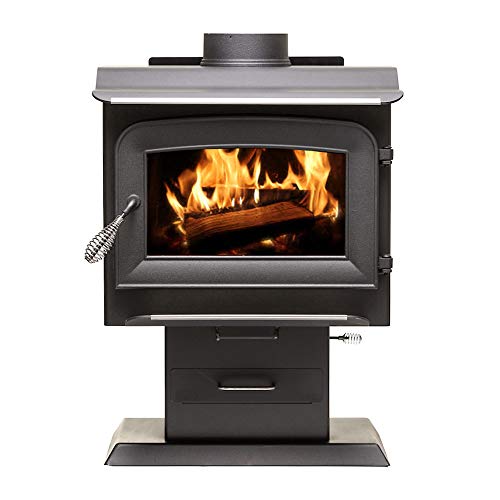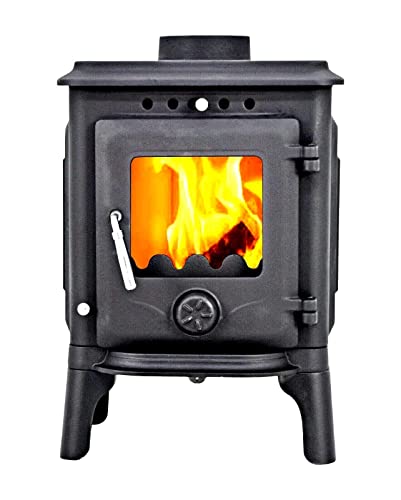How to Properly Operate a
best woodburning stove Stove
Wood stoves are an excellent method of heating your home. They're also cheap. Smoke from wood stoves can be hazardous to your health. It's important to understand how these appliances function and how they operate.
Modern stoves utilize secondary or catalytic combustion to control emissions. But older open fires and stoves create high levels of particulates.
The firebox

The firebox is the heart of any fireplace system. It's where you create a fire to heat your home and provide ambiance. It's a simple concept, but there are many important details that must be accounted for to keep your wood burning stove safe and efficient.
The simplest way to think of the firebox is to think of it as a box-like combustion chamber with walls and doors. The majority of fireplaces come with a prefabricated metal or masonry fireboxes. The type of firebox you choose will depend on your personal preferences as well as the kind of fireplace you have.
The majority of fireplaces that burn wood use a constant air flow to start the fire and burn fuel. Fresh air is introduced into the stove through dampers that can be adjusted inside the doors. This lets the fuels burn properly, and reduces toxic gases produced by incomplete or unburnt combustion. The exhaust gases are then taken up by the chimney, and safely out of your home.
Modern stoves with catalytic secondary combustion employ a special catalyst that reburns the unburned gasses to generate additional heat. This produces a more clean and less polluting smoke than traditional wood stoves without secondary combustion. Modern non-catalytic stoves are also available, but they're generally less efficient than stoves with secondary combustion that is catalytic.
Certain fireplaces that burn wood have backboilers that can be used for space heating or water heating. These stoves are known as "hybrids" or "combination". They are in use since the beginning of the 20th century.
Wood burning stoves can only be operated with seasoned wood. Freshly cut (green) wood has a high moisture content that can lead to low flue temperatures and excessive creosote accumulation in the chimney. This can cause chimney fires that destroy the stove, and they can be hazardous to your family's health.
If you're looking for an expert who can examine your wood-burning stove, or make repairs to your firebox, be sure the chimney expert you hire is certified by the CSIA certification and provides testimonials from their customers on their website. You can inquire about their prices, and what type of work they do.

The pipe that allows for ventilation
Wood stoves require ventilation to remove fumes from combustion and help keep your home warm and healthy. Ventilation is essential to remove carbon monoxide and nitrogen dioxide from the process of combustion. It also helps reduce the amount of air pollution and heat loss outside. Gas,
large wood burning stove and pellet stoves have different requirements for venting to accommodate the ways they operate. It is essential to maintain the stove's venting systems on an annually to ensure safety and efficiency.
The ventilation system is made up of the firebox and the ventilation pipe. The ventilation pipe and chimney work together to create draft, drawing smoke from the stove through the fireplace and into the outside air. The difference in densities and temperature between the hot
corner wood heater smoke and cold outside air creates draft. The greater the temperature of the smoke, the more it can rise up the chimney and ventilation pipe.
Modern wood stoves have been rated as low-emission units by the EPA. This means that they produce far fewer pollutants than older models, which contribute to global warming and other environmental issues. Many newer stoves come with pollution controls built-in to limit the amount they release while ensuring the emissions are disposed of in an efficient manner.
Older stoves that have open flues generate more carbon dioxide. It is a poisonous gas that is toxic and must not escape into your home. This could happen if the chimney is not clean or there is inadequate ventilation. It is essential to install carbon monoxide detectors within your home.
Measure the distance between the chimney's opening in the ceiling or wall and the location where the wood stove is on the floor. By multiplying this measurement by 2 will give you the shortest length of stovepipe that you require. You can choose a single-wall or double-wall stovepipes, but you must allow for the proper clearance from the combustibles.
When the stove is lit for the first time and the flame is first lit, adjust the vent until a proper flame has been created and the combustion is stable. It is recommended to avoid using briquettes of wood in the stove, because they are not logs, and could contain volatile chemicals that can cause the air vent to malfunction and create a dangerous situation.
The chimney
The chimney may not be something that homeowners give a lot of thought to, but it's actually an intricate system that requires care and attention. The chimney is made up of many important components which are all essential to the safe and efficient operation of your stove.
The wood burning stove's combustion gases are vented to the outside through the firebox, the vent pipe, and the chimney. This process is critical to preventing harmful emissions and also reducing carbon dioxide levels in your home. To accomplish this the chimney and flue should be hot enough to allow the gases to exit the fireplace without cooling. This is achieved by using a
woodburning stove with high heat output and by frequently adding new logs to the fire.
The majority of modern woodburning stoves are designed to operate with a chimney which is higher than older systems in order to create a more drafting effect. This can be a problem when the chimney's height is higher than the maximum height for your area. If this happens the chimney could be competing with the house stack for draft, causing gases to cool prior to exiting. This could impede the flow of gases and lead to creosote accumulation that could be a fire risk.
One of the most common errors that homeowners make is to open and close the fireplace door too often which can adversely affect the combustion. It is important to keep the fireplace door as closed as possible, and only open it to add firewood or ash. The door should not be open for long. This allows hot air from the stove to escape, making the logs cooler and harder to light.
Other kinds of combustibles may cause higher emissions or even the possibility of a chimney fire. The fact is that woodburning stoves are designed and optimized to burn wood and not other kinds of combustibles.
The flu
A woodburning stove needs a correctly sized flue to allow for proper air flow and draft development. Usually, the size of the flue must be at least 25 percent greater than the stove pipe (which connects the stove to the chimney) to allow enough space for smoke passage. In addition the stove must be installed on a hearth constructed of a non-combustible substance and is clear and unobstructed area in the front of the opening for the fireplace.
Modern stoves are equipped with an engineered combustion system that reduces the amount harmful byproducts that get released into the chimney. This feature can increase the efficiency of wood stoves by burning a fire which generates more heat while emitting less pollutants. Using other types of combustibles other than firewood however, can cause problems with lower efficiency and higher levels of emissions.
It is crucial to use dry or seasoned wood when burning wood in your
stove wood burning or fireplace. If your wood isn't seasoned or dry, it will emit high levels of creosote and water vapor into the chimney. This can result in low flue temperatures, and even a fire in the chimney.
Another method to avoid a chimney fire is to have a professional inspect and clean your flue system on a regular basis. This should include the stovepipe, chimney and chimney itself to ensure that they are all in good condition.
A dirty stove and flue system can lead to a poor chimney draft that could release carbon monoxide into your home. This could be hazardous to your family members and you shouldn't let it happen.
A good rule of thumb is to have your chimney and stove swept by a professional every year. This will keep your chimney and stove in good working order.